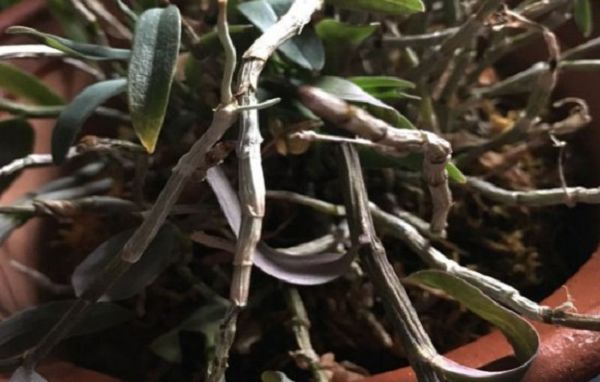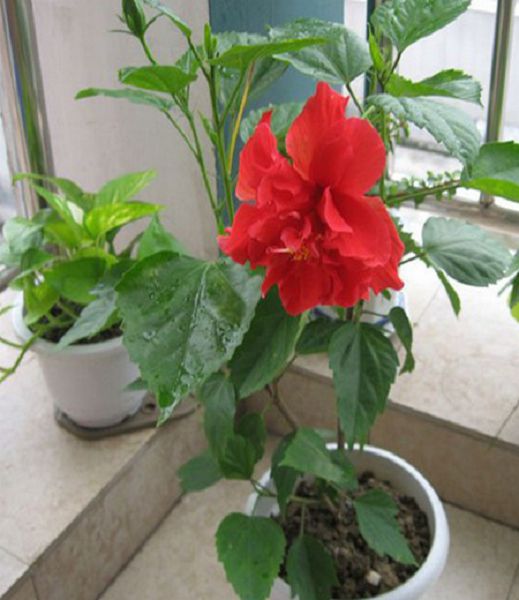How to survive the winter of potted Dendrobium

Now that it has entered the late autumn season, many pots who like to raise Dendrobium have found that the growth rate of the plant has begun to slow down. In fact, the cold tolerance of Dendrobium is relatively poor, so after entering autumn, as the weather gradually turns cool and the temperature gradually lowers, the plant also begins to enter a semi-dormant state. If the temperature is colder in winter, it will go into full dormancy.
After entering the winter, we will find that the leaves of the fully dormant Dendrobium usually fall off gradually, and its branches are bare, just like dead branches. In fact, the occurrence of such a situation is not the most important, the key lies in whether it can survive the winter safely and smoothly in the open air, which is an issue that the majority of friends are more concerned about.
In fact, as long as the following aspects of management can be done well at this time, potted Dendrobium can usually survive the winter safely and smoothly. So, what aspects of management work do we mainly need to do well?
First, adjust the temperature
Temperature protection is the top priority of Dendrobium in winter, because except for a few varieties with certain cold tolerance, most of its varieties are not cold-tolerant. Therefore, it must be moved to a warm indoor environment for maintenance in time before a sudden drop in winter temperature to avoid frostbite or frostbite to death.
Therefore, in winter, potted Dendrobium can not be placed in the open air to spend the winter. As Dendrobium prefers a warm, semi-overcast environment, it should be placed in a place with scattered light after entering the room in winter, while ensuring that the ambient temperature is kept above 5 °C.
Second, ensure humidity
Although Dendrobium likes a wet environment, watering in winter also needs to be properly controlled until the plant is dry. After all, it is basically dormant in winter, consuming less water, and it is easy to cause rotten roots if the matrix is too wet. And frequent watering is easy to reduce its cold resistance, thus making it more susceptible to cold.
Although it is necessary to control the frequency of watering in winter, Dendrobium has high requirements for relative humidity of the air, and the air is dry and cold in winter, which is relatively dry. This is contrary to its wet growth habits, so when the air becomes dry in the environment, it is necessary to spray water properly to improve the air humidity in the maintenance environment.
III. Stop applying fertilizer
Because Dendrobium is basically dormant in winter, it consumes not only water but also nutrients, because it basically does not grow and germinate. Therefore, it is necessary to stop fertilization in time in winter, otherwise it can not be absorbed by the plant after fertilization, which is not only a waste of fertilizer, but also may cause fertilizer damage.
Fertilizing Dendrobium should be carried out in its growing season. Generally, when the temperature warms up in spring, the dormant Dendrobium will be vernalized for 5-7 days, and then moved to a bright and ventilated place with more light for maintenance. When it starts to sprout in spring, we can fertilize it, but the concentration of fertilization must be controlled and enough wave absorption is required.
Related
- Fuxing push coffee new agricultural production and marketing class: lack of small-scale processing plants
- Jujube rice field leisure farm deep ploughing Yilan for five years to create a space for organic food and play
- Nongyu Farm-A trial of organic papaya for brave women with advanced technology
- Four points for attention in the prevention and control of diseases and insect pests of edible fungi
- How to add nutrient solution to Edible Fungi
- Is there any good way to control edible fungus mites?
- Open Inoculation Technology of Edible Fungi
- Is there any clever way to use fertilizer for edible fungus in winter?
- What agents are used to kill the pathogens of edible fungi in the mushroom shed?
- Rapid drying of Edible Fungi



